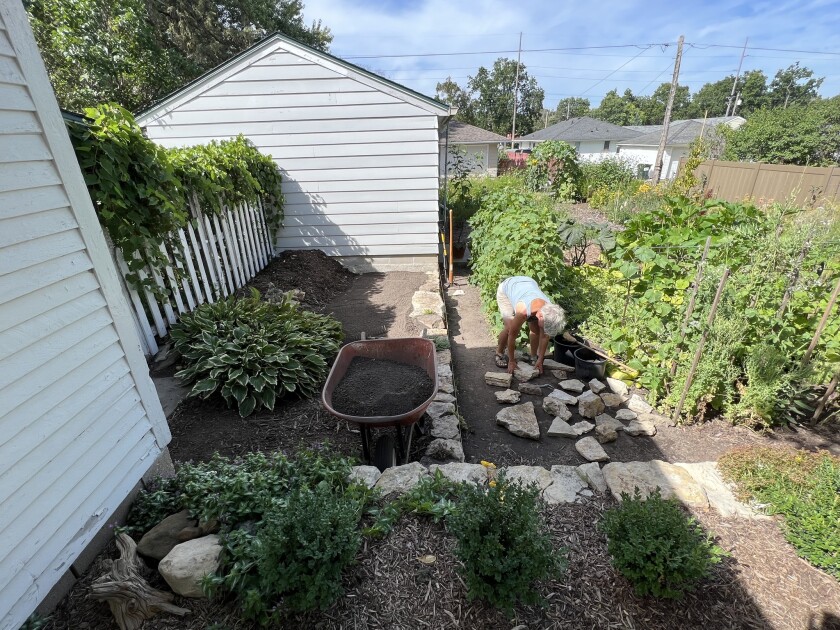ST. PAUL — The Minnesota Farm Bureau Federation welcomed a variety of urban farmers and organizations at its second annual Urban Ag Conference on Feb. 22 at St. Paul College.
Minnesota Farm Bureau Communications Director Rachel Reisig said the lesson from year one of the conference was that the space for urban farming discourse in Minnesota needed to be bigger.
ADVERTISEMENT
"There was so much energy and enthusiasm and excitement for this event that we learned we had to move to a bigger location," Reisig said. "We were able to welcome more attendees, more networking and more resources available to connect with urban farmers and just provide a better venue and a better space and a better experience for everyone involved that wants to be a part of it."
Attendees connected on the issues and opportunities for farming in an urban setting, and heard from state leaders including Minnesota Lt. Gov. Peggy Flanagan, Sen. Aric Putnam, Department of Agriculture Assistant Commissioner Patrice Bailey, and MFB President Dan Glessing.
The urban agriculture conference came from Minnesota Farm Bureau board members touring urban farms operations in the Twin Cities, and Reisig said the network has only expanded since then.

"The thing that I've learned is it's a spider web. You learn one person, and then they're like 'Hey, have you met this person?' And it just continues to unravel and expand, and it's built into this amazing network," she said.
Tips for urban farming
Kelly Rae Kirkpatrick is a Rochester resident, urban farmer and advocate for food security, along with a former city council member. She encouraged attendees serious about urban farming to apply for a USDA farm number if they're looking to begin food production at a larger scale.
"Having a farm number is really essential, because that's what gets you in the door as a farmer, eligible and to be viewed as a place that's producing food or producing specialty crops, and the ability to do agritourism," she said. "But urban farms also need to meet those public health guidelines for whatever county you're sitting in."
Kirkpatrick said that obtaining a farm number was "no issue at all" but it was time consuming, and those interested should contact their local FSA office.
ADVERTISEMENT
She dove headfirst into securing grants and other funding for food security, but Kirkpatrick said she'd like to see more growing of produce in the city of Rochester that goes to support food security.
"It's been interesting to see it evolve to folks receiving grants and subsidies for already processed food and or fresh foods, but they're not actually growing it themselves," Kirkpatrick said. "The folks that want to grow food and teach people to grow food seem to be far less than the folks that just want to donate and or give money out, which is all good, too."

Kirkpatrick said providing those experiencing food insecurity things like boxed macaroni and cheese or other non-culturally appropriate items isn't the answer to solving a complex issue.
"It's not just about giving food to others — it's like that old phrase, when you give someone a fish, you feed them for one day. When you teach them to fish, you feed them forever," she said. "I think our programming needs to lean into teaching folks how to grow."
How to grow
Kirkpatrick said learning to grow your own food is a lot easier than one would think.
"You don't need a lot of the fancy schmancy tools. You don't need to buy into every little kitschy material consumer good that's out there," she said. "Farmers have been growing food for tens of thousands of years, simply by putting a seed in the dirt. And that's that's really what it's all about."
Want to start urban farming today? Kirkpatrick gave these tips, specific to Olmsted County:
ADVERTISEMENT
"I would start with cardboard boxes, and I would start with Olmsted County compost from our compost facility. Lay those cardboard boxes down. Make sure there's plenty of overlap. Make sure you've got four to six inches of compost down. It's good quality compost. They know what they're doing at Olmsted County, and you can plant the seeds directly into that, or you can plant your little starts in there right away," she said. "Just don't break that cardboard barrier, and you have got an instant garden within 24 hours, and none of the weeds are going to grow underneath. None of the grass is going to come through, because you're basically smothering it and covering it, and you're interrupting that chlorophyll, that photosynthesis cycle, and everything dies underneath. That's the fastest, least expensive way to do it, and those cardboard boxes can be gotten from all of those big furniture store dumpsters, for free."









